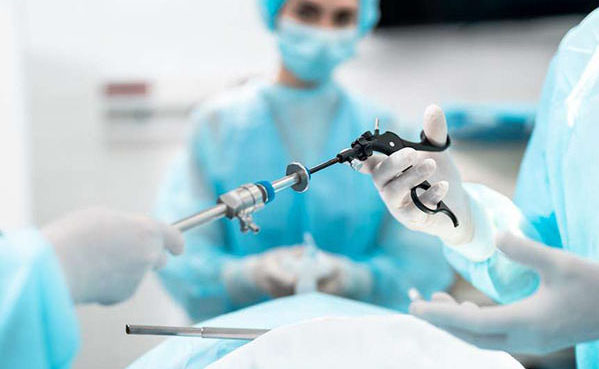Laparoscopic surgery, also known as minimally invasive surgery, offers several advantages over traditional open surgery. However, it also comes with its own set of potential risks and considerations. Here's a comparison of the advantages and potential risks of laparoscopic surgery compared to traditional surgery:
Advantages of Laparoscopic Surgery:
Smaller Incisions: Laparoscopic surgery involves making several small incisions (usually less than 1 cm) compared to a single large incision in traditional open surgery. This leads to:
- Reduced trauma to surrounding tissues.
- Less postoperative pain.
- Faster recovery times.
- Reduced Blood Loss: Since laparoscopic procedures are performed using small instruments and cameras, there is typically less blood loss compared to open surgery.
- Shorter Hospital Stay: Patients undergoing laparoscopic surgery often have shorter hospital stays compared to those undergoing traditional surgery. Some procedures can even be performed on an outpatient basis.
- Quicker Recovery: Due to smaller incisions and reduced trauma, patients tend to recover faster and can return to normal activities sooner.
- Lower Risk of Infection: Smaller incisions generally mean a lower risk of postoperative infections.
- Better Cosmesis: The smaller scars resulting from laparoscopic surgery are often more cosmetically appealing compared to the larger scars from open surgery.
Potential Risks of Laparoscopic Surgery:
Complications Related to Pneumoperitoneum: In laparoscopic surgery, carbon dioxide gas is used to inflate the abdomen to create space for the surgeon to work. Potential complications include:
- Gas embolism (though rare).
- Cardiovascular effects due to changes in intra-abdominal pressure.
- Risk of Injury to Surrounding Structures: Although rare, there is a risk of inadvertent injury to blood vessels, bowel, or other nearby organs during insertion of instruments or manipulation.
- Limited Visibility and Dexterity: Despite advances in laparoscopic technology, surgeons may face challenges with visibility and dexterity compared to open surgery, particularly in complex cases.
- Conversion to Open Surgery: In some cases, laparoscopic surgery with Laparoscopic Surgeon in Jaipur may need to be converted to open surgery due to technical difficulties or unexpected findings during the procedure.
- Postoperative Pain: While generally less than with open surgery, laparoscopic procedures can still cause postoperative pain, especially in cases where extensive tissue manipulation or a longer duration of surgery is required.
- Specialized Training Requirement: Laparoscopic surgery requires specialized training and experience for surgeons to perform effectively, which may limit availability in some settings.
Advantages of Traditional Open Surgery:
- Direct Access to Organs: In open surgery, surgeons have direct access to the surgical site, which can be advantageous in certain complex cases where visibility and dexterity are crucial.
- Familiarity: Traditional open surgery has been practiced for decades and is familiar to most surgeons, which can be reassuring in challenging cases.
- Ability to Handle Complications: In cases where unexpected complications arise, open surgery provides more immediate access for interventions.
In summary, laparoscopic surgery offers many benefits over traditional open surgery, primarily related to reduced trauma, quicker recovery, and improved cosmetic outcomes. However, it is not without risks, particularly related to the pneumoperitoneum and potential complications specific to laparoscopic techniques. The choice between laparoscopic and open surgery depends on factors such as the specific procedure, patient characteristics, surgeon expertise, and hospital resources.




.png)

Comments